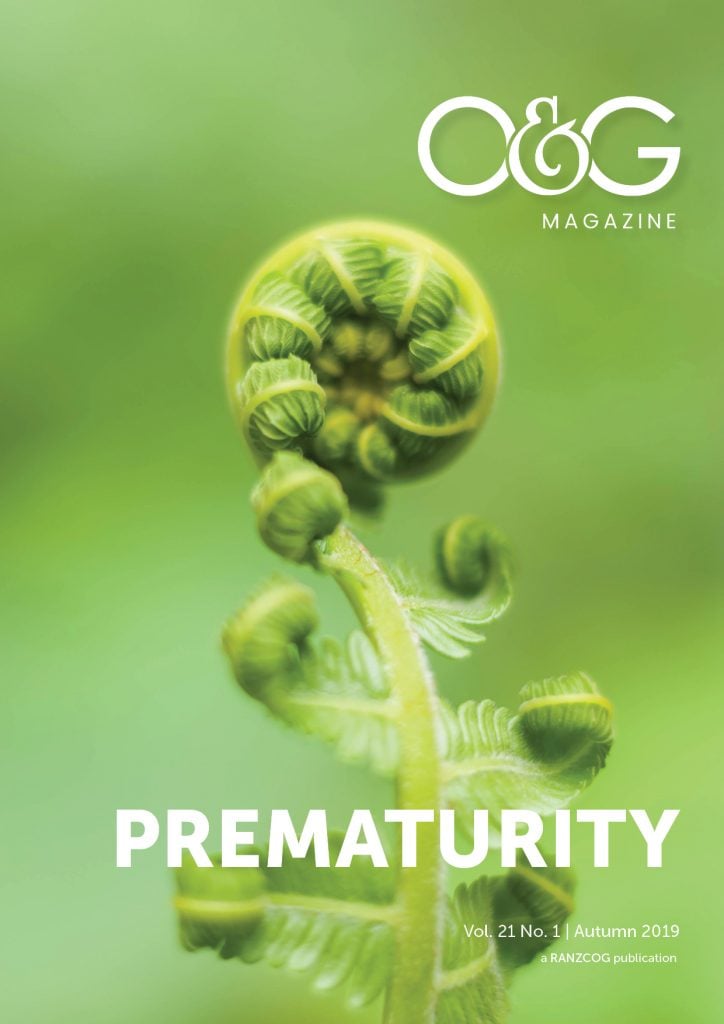Ulipristal for fibroids
Ulipristal is a progesterone receptor modulator that is clinically approved for the treatment of fibroids in Australia and New Zealand, and for emergency contraception in Australia. Two recent phase 3, double-blind, placebo-controlled studies examined the efficacy of ulipristal on the time to achieve amenorrhea, and rate of amenorrhea in women with symptomatic uterine fibroids. In the first study, 157 women were randomised to either ulipristal 5 mg daily, ulipristal 10 mg daily or placebo, for 12 weeks followed by a 12-week drug-free evaluation period. Amenorrhea was achieved by 47 per cent and 58 per cent of patients treated with 5 mg and 10 mg ulipristal respectively, compared with one of 56 (1.8 per cent) of women treated with placebo.1 In the second study, 432 women with symptomatic fibroids were randomised to ulipristal 5mg daily, ulipristal 10 mg daily or placebo, for a 12-week treatment course followed by a drug-free interval of two menses, followed by a second 12-week treatment course. In the first 12-week course of treatment, 42 per cent of women in the 5 mg ulipristal group and 55 per cent of women in the 10 mg ulipristal group achieved amenorrhea, compared with zero per cent of women in the placebo group.2 Both studies showed a similar pattern of improvement in both ulipristal groups on self-reported uterine fibroid symptom and quality-of-life scales. More hot flushes were reported in the ulipristal compared to the placebo groups in both studies.
A recent study reported a small case series of six women who received ulipristal 5 mg daily with the ultrasound diagnosis being adenomyosis without the presence of uterine fibroids. The authors reported that all patients showed increased ultrasound signs of adenomyosis and increased pelvic pain following the course of ulipristal.3 A large systematic review of endometrial changes with ulipristal use analysed 10 studies including 1450 women. Endometrial hyperplasia was reported in six women, during or after ulipristal acetate use. Five were simple hyperplasia; one biopsy showed simple atypical endometrial hyperplasia that resolved into benign secretory endometrium by the end of the treatment. One case of endometrial adenocarcinoma was reported; however, this does not seem to be related to ulipristal acetate use since it was already present at the baseline biopsy. Most studies in the meta-analysis reported a transient increase in endometrial thickness that returned to normal a few weeks after finishing treatment. The authors concluded that ‘based on the literature found in this systematic review, follow up after a maximum of four courses of ulipristal acetate did not report any non-reversible (pre-)malignant lesions of the endometrium’.4
Delivery options in second stage
The rate of instrumental vaginal birth in Australia has risen from 22.8 per cent in 2004 to 26.0 per cent in 2016, while the rate of caesarean section (CS) has increased from 25.3 per cent to 28.5 per cent and the rate of vaginal delivery has decreased from 51.9 per cent to 45.5 per cent over the same period.5 In the United States, the rates of instrumental vaginal deliveries have significantly declined from 9 per cent in 1990 to 3.3 per cent in 2013.6
A recent German study retrospectively analysed 1971 singleton births between 2004 and 2014, 149 forceps delivery, 393 vacuum deliveries and CS in labour. All births were at greater than 34 weeks gestation and transverse and breech presentations were excluded. Women who received an instrumental delivery had a significantly higher level of anaemia and haemorrhage compared to caesarean, while babies delivered by CS had a lower cord pH at birth but no difference in five-minute Apgar score. Forceps had a lower rate of vaginal tears and neonatal cephalohaematoma compared to vacuum delivery. The authors concluded that, if performed correctly, instrumental vaginal birth could be considered as an alternative to second stage caesarean section.7
A retrospective US study analysed 2531 singleton births at ≥37 weeks gestation in women with no prior vaginal delivery who reached a station of +2 or below and underwent an attempt at an operative delivery. Included in the analyses were 1382 vacuum deliveries, 1018 forceps deliveries and 131 CS deliveries. In comparison to the German study, these selection criteria include cases at a more advanced descent. The main maternal outcomes differed in postpartum infection (vacuum: 0.2%; forceps: 0.9%; CS: 5.3%), postpartum haemorrhage (vacuum: 1.4%; forceps: 2.8%; CS:3.8%), and severe perineal and vaginal lacerations (vacuum: 19.1%; forceps: 33.8%; CS:0%). There were no differences in neonatal outcomes.8
These data, however, provide only part of the decision of mode of delivery in the second stage. Maternal preference, urgency of delivery, training and experience must all be factored in to each clinical situation.
References
- Simon JA, Catherine W, Segars JH, et al. Ulipristal acetate for treatment of symptomatic uterine leiomyomas: a randomized controlled trial. Obstet Gynecol. 2018;131:431-39.
- Liu JH, Soper D, Lukes A, et al. Ulipristal acetate for treatment of uterine leiomyomas: a randomized controlled trial. Obstet Gynecol. 2018;132:1241-51.
- Conway F, Morosetti G, Camilli S, et al. Ulipristal acetate therapy increases ultrasound features of adenomyosis: a good treatment given in an erroneous diagnosis of uterine fibroids. Gynecol Endocrinol. 2018;1:1-4. doi: 10.1080/09513590.2018.1505846.
- De Milliano I, Van Hattum D, Ket JCF, et al. Endometrial changes during ulipristal acetate use: A systematic review. Eur J Obstet Gynecol Reprod Biol. 2017;214: 56-64.
- Australian Institute of Health and Welfare. National Core Maternity Indicators. 2018. Available from: www.aihw.gov.au/reports/mothers-babies/ncmi-data-visualisations/contents/summary.
- Bailit JL, Grobman WA, Rice MM, et al. Evaluation of delivery options for second-stage events. Am J Obstet Gynecol. 2016;214:638.e1-638.e10.
- Polkowski M, Kuehnle E, Schippert C, et al. Neonatal and maternal short-term outcome parameters in instrument-assisted vaginal delivery compared to second stage cesarean section in labour: a retrospective 11-year analysis. Gynecol Obstet Invest. 2018;83: 90-8.
- Bailit JL, Grobman WA, Rice MM, et al. Evaluation of delivery options for second-stage events. Am J Obstet Gynecol. 2016;214:638.e1-638.e10.
References
Ulipristal is a progesterone receptor modulator that is clinically approved for the treatment of fibroids in Australia and New Zealand, and for emergency contraception in Australia.






Leave a Reply